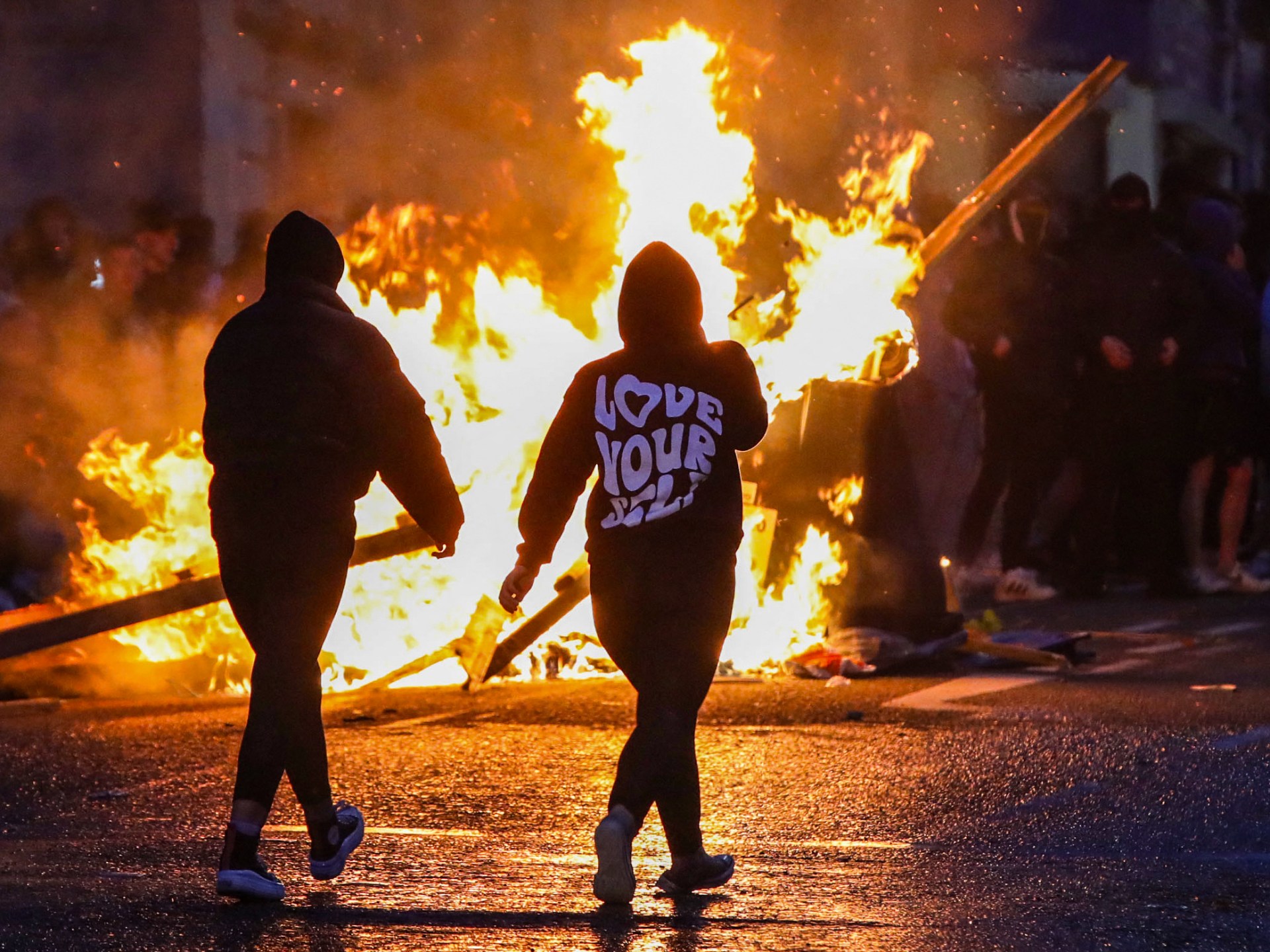Last Friday, Albert Ojwang, a young blogger in the western Kenyan town of Migori, was arrested over a complaint by a senior police officer regarding a post on X and taken 350km (217 miles) away to the Central Police Station in the capital, Nairobi. By the next day, he was dead, with police claiming – incredibly – that he had committed suicide by banging his head against the cell walls. The truth, as confirmed by a postmortem, is that he was beaten to death.
This comes as no surprise to Kenyans who are depressingly familiar with police violence. But Ojwang’s arrest and brutal murder were more than that. The incident is a chilling message to a troublesome generation as the country approaches what has become its protest season – “do not test us”.
Not long before, Rose Njeri, another young Kenyan, was arrested. Her “crime”? Designing a digital tool to make it easier for the public to participate in hearings on the government’s controversial 2025 Finance Bill. The irony is both cruel and stark: a government that routinely exhorts citizens to engage in “public participation” arrested a citizen for doing precisely that efficiently and at scale.
These arrests are not isolated incidents. They are the latest flare-ups in a growing and deliberate crackdown on youth-led dissent. And they are a reminder that Kenya’s increasingly paranoid ruling elite is still haunted by the spectre of last year’s Gen Z protests – massive, spontaneous, decentralised demonstrations that erupted in response to the Finance Bill and its punishing economic proposals.
In fact, over the last decade, the annual publication of, and public debate over, the government revenue and tax proposals have become the main focal point of antigovernment protests, linked to widespread anger over the cost of living. Last year’s protests, however, took a new turn, sidelining the country’s politicians, giving voice to a new generation, and even forcing President William Ruto to veto his own bill and fire his cabinet.
That uprising was unlike any other in Kenya’s recent history: leaderless, tech-savvy, angry, and hopeful. It drew energy from online platforms and informal networks, cutting across ethnic and class divisions. For weeks, young people took to the streets, demanding an end not just to a specific bill, but to a broader system of exclusion, corruption, and indifference. The state responded with force. Dozens were killed. Others disappeared. The violence did not break the spirit of protest, but it did send a message: this government is willing to use deadly force to silence dissent.
And now, as the 2025 Finance Bill winds its way through the public consultation process, the early signs are that the cycle may repeat. The arrests of Ojwang and Njeri, even before protests have properly begun, suggest a strategy of preemptive suppression: neutralise the nodes of mobilisation before the network can activate.
But this paranoia is not uniquely Kenyan. Just weeks ago, Kenyan activist Boniface Mwangi and Ugandan journalist Agather Atuhaire were arrested while in Tanzania to attend the trial of opposition leader Tundu Lissu, and allegedly tortured and raped by Tanzanian police. This points to the emergence of a regional authoritarian consensus. Fearing a coming together of popular movements in their individual nations inspired by the successes of Kenya’s Gen Z movement, the Kenyan, Tanzanian, and Ugandan governments are forming their own informal alliance, sharing not just intelligence and resources, but political fears and tactics.
Their calculus is clear. Each is led by a regime facing economic turmoil, discredited democratic processes, and fragmented opposition movements. Each sees youth-led mobilisation as the most potent threat to its hold on power. Each has, in recent years, responded to such mobilisation with brutality. And, crucially, each knows that the costs of repression are lower than ever.
For much of the post-Cold War era, authoritarian excesses in Africa were tempered by the fear of inciting Western disapproval. Rhetorical condemnation was not just embarrassing but carried real risks, not only of losing aid or feeling the weight of economic sanctions, but, perhaps more consequentially, a loss of popular legitimacy. However, democratic decline and moral disarray in the West have dramatically altered that equation.
Today, the West is shedding the false image of moral superiority which cloaked its domination of the globe. From arming and supporting a genocide in Gaza to the brutal suppression of dissent on its own streets and the demonisation of immigrants and refugees, it turns out that the first world is just the third world in drag. Their words of condemnation for the atrocities and brutalities of others would now simply reek of dishonesty and hypocrisy.
Further, the same governments that once demanded good governance and civil rights now prioritise counterterrorism, migration control, and market access. They strike deals with autocrats, turn a blind eye to repression, and reframe their interests as “stability”. Western support for civil society has withered. Funding has declined. Visibility has shrunk. The result is a shrinking civic space and a growing sense of impunity among East African elites.
From the vantage point of these governments, this moment presents both a threat and an opportunity. The threat is clear: protests could spiral into a full-scale political reckoning. The opportunity is darker: to act now, preemptively and brutally, while the world is not looking and the opposition is disorganised.
But it is also a moment of possibility for the movements these regimes are trying to suppress.
The 2024 Gen Z protests in Kenya marked a political awakening. They showed that it is possible to bypass traditional gatekeepers – political parties, NGOs, foreign donors – and mobilise around economic justice and dignity. They rejected the logic of ethnic patronage and elite negotiation. And crucially, they exposed the hollowness of the old accusations that civic protest is always the work of “foreign puppets”.
By framing civic activism as inherently un-African or externally manipulated, regimes attempt to delegitimise protest and sow doubt. But today’s youth activists are pushing back – not by seeking validation from the West, but by grounding their struggles in lived reality: the daily pain of high taxes, joblessness, debt, and corruption.
The current crackdown is evidence that these movements have rattled the powerful. But fear is not the same as victory. The lesson of the past years is that organised, principled dissent is possible, and effective. What comes next must be regional. If authoritarianism is becoming a cross-border project, then so too must resistance. Kenya’s civic actors must stand with Tanzanian and Ugandan activists. Solidarity must be built not only through shared hashtags, but through shared strategy: legal defence networks, data collection on abuses, secure communication channels, joint campaigns.
Albert Ojwang’s death, Rose Njeri’s arrest, the violations against Boniface Mwangi and Agather Atuhaire – these are not aberrations. They are signals. Signals that the ruling classes of East Africa are preparing for a fight. The question is whether the rest of us are preparing to fight as well.












